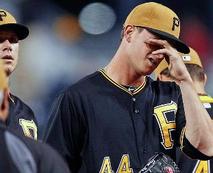 2012 was a season of false hope for Pirates' fans. As the Cincinnati Reds celebrated around Homer Bailey after throwing the 16th no-hitter in club history, the Pittsburgh Pirates walked off the field with disappointment and frustration. A season that started with unexpected excitement and success came to be epitomized by the futility shown on Friday night. With the longest consecutive season losing streak in the history of sports, the Pirates were finally on the brink of breaking out of their nineteen year slump. Star centerfielder Andrew McCutchen has put together an MVP caliber season with a .329/.401/.559 slash and 31 home runs, acquired ace A.J. Burnett has experienced a solid season in his first year with the black and gold, and closer Joel Hanrahan has saved 36 games for the upstart Bucs. However, since July 18th (last time Pirates had a share of 1st place), the Pirates have gone 26-41 and have scored 55 less runs compared to runs allowed since the start of the second half. A post all-star break fielding percentage of .981 (fifth worst in MLB), 49% stolen base success rate (last in MLB), and 4.05 runs per game (8th worst in MLB) all have contributed to Pittsburgh's second half slide. While their hitting has not changed much since the break (only .01 decrease in runs per game), the Pirates' pitching has been its undoing. The first half success was clearly built on the strength of its pitching (3.47 ERA, 85% save success rate, .242 opponent average, .308 opponent OBP), while the staff has just collapsed in the second half (4.39 ERA, 65% save success rate, .257 opponent average, .322 OBP). Pitchers such as James McDonald (sparkling 2.47 ERA pre all star break, ugly 7.42 ERA post all star break) and Jason Grilli (1.87 ERA pre all star break, 4.50 ERA post all star) are two examples of pitchers that have experienced second half regression. In addition, Andrew McCutchen and his red hot first half (aided by a .400 + BABIP) has been unable to sustain his early season success. McCutchen's second half line of .292/.387/.483, while still productive, is a far cry from his first half numbers that included a .363/.414/.625 line and 180 OPS+. His struggles, whether from the pressure of trying to guide his team to a winning record for the first time in 19 years, or from his inevitable regression to the mean, have been magnified even more because of the weaknesses around him. Only two other hitters have OPS+ above 100 (Pedro Alvarez, Neil Walker) with the rest of the team having below average batting average, on base percentage, and slugging percentage lines. The level of incompetence in the batter's box has even reached to the point where starting left fielder Alex Presley and starting shortstop Clint Barmes, both have a lower offensive WAR compared to starting pitcher James McDonald (Barmes' -.5 oWAR, Presley's 0.3 oWAR, to McDonald's 0.4 oWAR). This inability for any sort of offensive production has greatly hindered any sort of success even when pitchers have throw well (of their last nine losses, they have scored two or less runs in seven of those games). The past two seasons have given hope to a fan base that has seen nothing but absolute futility and failure for nearly two decades. Yet, the Pirates have a minor league system rich in talent that is only a year or two away. Flamethrowers Gerrit Cole and Jameson Taillon have the stuff to front a big league rotation and could be up by next season. Shortstop Alen Hanson as well as outfielders Josh Bell and Gregory Polanco, all have impact potential with the bat and could fill serious needs with the big league club. Help is on the way, and with the progress made so far, Pittsburgh has a realistic shot a contending in the coming years. A core centered around McCutchen, a talented rotation, and a steady bullpen should bring Pittsburgh baseball some credibility for the first time since 1992. Although this season brought both enthusiasm and heartbreak, excitement and disappointment, this season was a major stepping stone towards future success.
9/23/12: Jon Lester's 14 game winning streak against the Baltimore Orioles was snapped at Fenway Park in a 4-2 Saturday afternoon. This streak was tied for the longest in O's history with the everlasting and seemingly indestructible Jamie Moyer.
9/24/12: Yesterday, Adrian Gonzalez hit his second home run since being acquired in the August mega-trade with the Boston Red Sox, with 105 plate appearances separating each round tripper. However, later in the game he hit his second of the day and his third in Dodger Blue. His second and third Dodger homers were separated only by 1 plate appearance.
9/25/12: Justin Verlander has a career 15-2 record against the Kansas City Royals and is the reigning American League Cy Young and MVP winner. However, one member of the Royals, Nebraska product Alex Gordon, has four extra base hits off the Detroit ace this season including a home run yesterday. This ties for the most extra-base hits by any player against Verlander the last five seasons.
9/26/12: After Chipper Jones and his 2,724 hits and 468 home runs with one organization, the next highest totals from a number one overall pick who only played with the team by which he was drafted are from 1979Seattle Mariner draftee Al Chambers. Chambers only had 25 hits and two home runs.
9/27/12: On Thursday, R.A. Dickey became the first pitcher to win 20 games while playing on a sub .500 team since 1997. Then 34 year old Roger Clemens accomplished the feat for the 76-86 Toronto Blue Jays, a season in which Clemens also captured his fourth Cy Young.
9/28/12: On Friday, A.J. Griffin earned the victory for the Athletics over the Mariners. This marked the 50th win recorded by rookie pitchers for the A's this year, making it only the third occurrence in the past 100 years. The rookie win record as a team stands at 51 for the 1952 Brooklyn Dodgers.
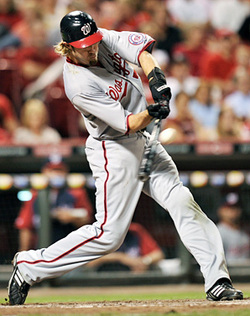 Jayson Werth is currently in the second year of his 7 year $126 million mega-deal with the Washington Nationals. After a dismal first season and not coming close to living up to his contract, Werth has quietly had a revival of sorts in 2012. He received lots of media attention in 2011 for his poor play, even as the Nationals finished a respectable 80-81. In 2012 however, Washington has taken off and transformed into perhaps the best all-around team in the National League. Werth was a non-factor in the first half of the campaign due to a DL stint, as young phenoms Stephen Strasburg and Bryce Harper received all the attention. The two young studs were accompanied by former all-star Ryan Zimmerman, the emergence of guys like Adam LaRoche and Ian Desmond, and a phenomenal pitching staff all the way around.
Since coming off the DL, Jayson Werth has played in 74 games and has made major contributions out of the leadoff spot; a spot that lacked production in the first half for D.C. The Nationals right-fielder has posted a tremendous .390 OBP and has been able to get the offense rolling. Werth has also very impressively only struck out in 16.6% of his plate appearances in 2012, a statistic well below his career average of 24.1%. Werth, a 6 foot 5 inch right-handed hitter, may not appear to be a conventional leadoff hitter, but when you find a guy who leads his team in OBP and doesn’t strike out as often, he is a perfect fit for the spot. Although his home run percentage is down in 2012 (1.6%) from his career mark (3.7%), Werth still has the ability to pop one every once in a while. Werth possesses above average speed as well, swiping 8 bags in 10 attempts in limited time in 2012.
In my mind, Jayson Werth is the key for the Nationals as they make their first Postseason appearance since 1933. Just getting on base, as he has been doing, is all the Nationals need from him with the likes of Bryce Harper, Ryan Zimmerman, Adam LaRoche, and Ian Desmond hitting behind him. Another attribute Werth brings is plenty of postseason experience, as he won a ring in 2008 while in the City of Brotherly Love. There is no question Washington is an extremely talented ball club headed into October (yes, even with Stephan Strasburg being shutdown), but they are young. Werth should be able to instill confidence and relax his teammates as most of them experience the thrill of being in the postseason for the first time.
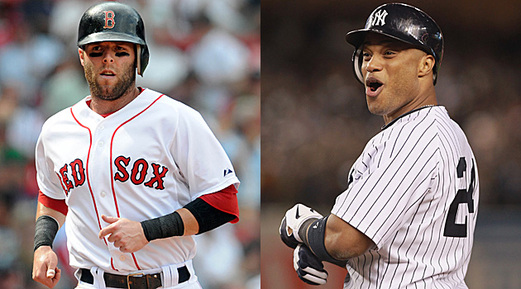 Although Robinson Cano may be having the better season, does Dustin Pedroia still claim to being the game's top second baseman? Rivalry. The Boston Red Sox and New York Yankees have symbolized the meaning of this word for generations and generations. Within these two great franchises’ lies a smaller rivalry, between two players who happen to be among the best in baseball at the keystone. So, inevitably, the question arises: who is more valuable to their team, Robinson Cano or Dustin Pedroia? Each player is better than the other at certain aspects of the game, but we will delve further into the numbers to analyze these players a little closer.
Cano has played in more games than Pedroia, but they have both played long enough to take away averages and percentages of all their combined numbers. In order to compare these superstars, we will take a look at their average season of 162 games. Both guys own solid Triple Crown numbers with the pinstriped second baseman checking in at a .306 batting average with 23 home runs and 94 runs batted in compared to Pedroia’s line of .302/17/78. These more glamorous and “sexy” statistics are the old-fashioned way, and unfortunately, still popular way at determining the value of a player. The left-handed hitting Yankees second baseman has a beautiful swing that is perfect for the short porch at Yankee Stadium, so it comes as no surprise that he is considered one of the best hitters in the game. It is clear that Cano hits for a bit more power than Pedroia, with more home runs and a higher slugging percentage (.499 to .461). In addition, give Cano credit for staying on the field at great consistency. Pedroia has been pretty durable himself, but he missed the second half of 2010 with a foot injury and close to a month in 2012 with a thumb problem. Cano has played in at least 153 games every year since 2007.
Cano also has a step up in total bases, averaging 315 to Pedroia’s 296. But hold on; total bases only accounts for a player’s bases collected via the base hit (single, double, triple, home run). Walks, hit by pitches, and stolen bases are other ways a player can control of taking a base. When adding walks, HBPs, stolen bases and subtracting caught stealing (as a caught stealing loses a base runner for the team), Pedroia has Cano beat (382 compared to 359). Additionally, Pedroia simply gets on base more than Cano (.369 OBP to .349 OBP). When he does reach, it enables his team more opportunities to score runs. As evidence, Pedroia also leads Cano in the runs category (106 to 95). Dustin is more prone to swipe a bag as well, and he is able to do it at a very solid success rate averaging 19 steals and only being caught 5 times (79%). Cano only averages 4 steals while being caught 4 times; a poor success rate (50%). While on the topic of base running, we will glance at how many outs each player makes while on the base paths (OOB). Pedroia has made an average of 5.1 outs while Cano has made 6.1 outs. In such instances, a player is thrown out trying to advance an extra base. Shifting to more negatively viewed offensive statistics, Pedroia has Cano beat out in two categories that managers lose hair over. Dustin strikes out an average of just 63 times (8.7% of his PA) and Cano whiffs an average of 81 times (11.9% of his PA). Pedroia also grounds into less double plays than his counterpart in New York (14 to 21). This means Cano makes 123 outs for his team via the strikeout or double play, compared to Pedroia’s 91.
Let’s not forget the other side of the ball: defense. Pedroia can stop the “lasers” with the best of them too. Cano does not match up to the defensive numbers Pedroia has put up. Pedroia averages just 5 errors per season (.991 career fielding %), compared to Cano’s 10 error average (.986 career fielding %). Another very important fielding stat is Rtot, where Pedroia, in the average season, nearly has Cano doubled (8.3 to 4.8). This basically measures how many runs the player was worth based on the amount of plays they made. Now, to sum everything up, we look at three statistics that measure how valuable a player is to a team overall. Pedroia has Cano beat in all three: WAR (wins above replacement), Own% (offensive winning percentage), and WPA (win probability added). Pedroia averages a 4.3 WAR compared to Cano’s 4.1. Additionally, Dustin also has a .619 Own% while Cano owns a .588 Own%. Lastly, Pedroia’s 1.1 WPA once again edges out Cano’s 0.74. Robinson Cano has had a tremendous career in New York, but the scrappy, undersized dirt-dog at Fenway proves to be more valuable to a major league baseball team.
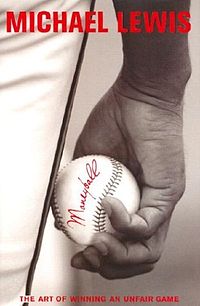 Ten years ago, the Oakland Athletics were on the cusp of greatness, finishing first in the American League at the vanguard for their groundbreaking usage of sabermetrics in baseball. By disposing of previously valued statistics such as runs batted in and instead focusing on the importance of nontraditional numbers like on-base and slugging percentage, the A's stormed to 103 wins. This occurred even after losing ex-MVP Jason Giambi, starting outfielder Johnny Damon, and closer Jason Isringhausen to free agency, only further making their season all the more impressive. The financially disadvantaged A's (third lowest payroll in the league) lead by General Manager Billy Beane (AKA Brad Pitt) exploited a market inefficiency that was later compiled and chronicled in Michael Lewis' "Moneyball: The Art of Winning an Unfair Game." However, since "Moneyball," front offices around the league now actively use sabermetrics to make decisions about acquiring, disposing, and evaluating talent. Once ahead of the curve, Oakland was soon buried by larger market teams utilizing the same sabermetric methods. Ten years later, Oakland is making another surprising playoff push, currently two games up on intra-division rival Los Angeles in the contested Wild Card chase. However, the statistical foundation of the unexpected 2002 run is no longer paramount to Oakland's 2012 success. Oakland is third last in the Junior Circuit in on-base percentage (.309) and in addition to having the fifth worst slugging percentage (.399). Also, two more important facets of the "Moneyball" concept include that speed is overrated and big money free agents are not usually worth their value, especially value that could be found much more cheaply. Yet, the Athletics have stolen the ninth most bases in the league and splurged on Cuban defector and Youtube workout sensation Yoenis Cespedes (4 years/$36 million), fringe outfielder Coco Crisp (2 years/$14 million) while absorbing the remaining money for Stephen Drew ($7.5 million). These seemingly risky moves have not only worked out, but have been huge reasons for the East Bay baseball revival. Cespedes, in addition to hitting moonshots like this (462 feet), has been remarkably productive when healthy, with a .289/.350/.492 line and 132 OPS+. Yet, Oakland also has stayed true to "dumpster diving" past, acquiring the likes of Brandon Inge, Jonny Gomes, Brandon Moss, and George Kottaras after falling out of favor with their previous club. Guys like Gomes, Moss, and Kottaras have produced with OPS+ of 138, 150, and 119 respectively while Brandon Inge has defensively solidified third base. In addition to these methods of evaluating talent, Oakland has also begun to appreciate different statistics usually disregarded by other teams. First, Oakland has grounded into the second least amount of double plays in baseball (only 93 times) compared to Detroit, which has grounded into two outs a staggering 150 times. That is 114 more outs in which Oakland has been able to prolong an inning and find a way to score runs. Alternately, the Athletics lead the league in strikeouts, which has actually allowed them to stay out of double plays and extend the inning, contrary to popular belief that strikeouts are bad. Another example of Oakland getting on base and being able to stay there is illustrated with its stolen base percentage. Oakland has a staggering 80% success rate (tied for second in all of baseball). On the other hand, the Pittsburgh Pirates have been caught 50 times compared to only 30 for Oakland, which has resulted in a horrid 58 success rate. This ability to stay on base upon arriving there has evidently led to more runs and thus more victories. These smart and efficient methods on offense along with a pitching staff fifth in ERA and sixth lowest batting average against have combined to produce one of baseball's biggest surprises. Undoubtedly, Oakland remains in the forefront of evaluating talent usually overlooked by larger market teams, except this time they are using a new kind of Moneyball.
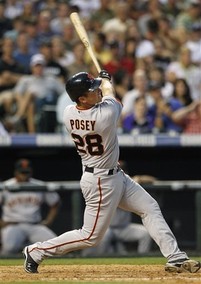 After experiencing one of the most gruesome collisions at home plate in the history of the baseball, just staying healthy would have been considered an acceptable season for Buster Posey. However, not only has Posey stayed remarkably durable this year, but also he has produced like an MVP. A triple slash of .332/.405/.541 would be considered extremely productive for any player, but doing so as a catcher makes it all the more impressive. The daily wear and tear accumulation from catching makes it difficult to produce offensively in addition to handling the pitching staff and taking innumerable beatings from balls in the dirt and home plate collisions. For instance, the average major league catcher produces at an abysmal .249/.320/.400, a far cry from Posey's production this year. Additionally, this is coming from a player who was drafted as a pitcher out of high school, became an All-American shortstop at Florida State, and someone who once played all nine positions in one game. His near flawless transition to behind the plate is incredible, considering he only picked the position up in his sophomore year of college. A position that often takes years to learn and even longer to master, Posey was a finalist for the Johnny Bench Award (awarded to the best catcher in college baseball) after just one season playing the position. Lauded by scouts for his off-the-charts makeup and leadership ability, the San Francisco Giants had enough faith in him to be their future behind the plate. Then just two years after being drafted, Buster rewarded their faith by winning the 2010 National League Rookie of the Year and a World Series Championship. Now, Posey stands above the rest as one of the best players in the game today. His 168 OPS+ is best in the Senior Circuit and also boasts a top ten WAR (6.4) and WPA (4.4). Also, as previously mentioned, Posey's health after a near-catastrophic injury has been impeccable while playing in 109 games as a catcher. This durability has allowed him to log a good number of games behind the plate in addition to saving his legs with the occasional start at first base. Of catchers with at least 800 innings caught (arbitrary number that denotes roughly 100 games caught), Posey ranks ninth highest in caught stealing percentage (30%) as well as having the sixth highest range factor among backstops. Also, Posey guides a staff that has the seventh lowest ERA in all of baseball and is frequently praised for his keen ability to call a game. Add in the fact that Posey has been the driving offensive force for a team that lost its leadoff hitter and sparkplug (Melky Cabrera) and lacked much firepower to begin with, Posey's numbers continue to impress. To further prove his worth, he has hit an incredible .383/.455/.639 in the second half, helping his team dust the "improved" Dodgers in a previously tight NL West divisional race. And just last week, the Giants clinched their first division title since Posey's last full season. Coincidence? I think not. Clearly, Posey is a extraordinary athlete who not only lived up to the hype but has exceeded it faster than anyone could have predicted with a shiny MVP award staring him right in the face in just his third season. Then again, why should we be surprised?
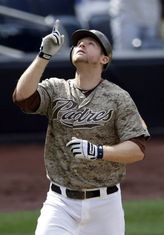 Albert Pujols and…Chase Headley? That’s right, Chase Headley, the San Diego Padres third sacker, has had a very similar, if not better, 2012 campaign as $240 million man Albert Pujols. Playing in the NL West, where most of the spotlight is put on the big market Giants and Dodgers, it is difficult for a guy like Headley to receive the recognition he deserves. Even after getting hot post-all-star break, his Padres sit in 4th place and out of the playoff picture. Despite his team’s struggles, Chase has blossomed into a star; putting together a fantastic season with a stat line of .282/.371/.489/ with 29 long balls and a national league leading 108 runs batted in. Just to give an idea of how productive that is, Albert Pujols has posted these numbers: .286/.342/.522 with 30 round trippers and 101 RBI. Other eye-popping similarities between the two are found in offensive categories such as runs (Headley 86, Pujols 81), hits (Headley 160, Pujols 160), WAR (Headley 5.2, Pujols 4.6) OPS (Headley .860, Pujols .865) and OPS+ (Headley 137, Pujols 136). One problem Headley does run into is striking out. He has whiffed 151 times compared to Pujols’ 68. However, on a more positive note for Headley, he has only grounded into 7 double plays while Pujols has bounced into 18 “rally killers.”
To make this season even more impressive for Headley, he has done his damage in Petco Park, the ultimate nightmare for a hitter. In terms of runs scored per game, Petco is the 6th worst park to hit in during the 2012 season and has the third lowest home run rate in all of baseball. In 2012, Headley is hitting a very respectable .265/.350/.434 in Petco Park. Of course this means Headley has been great on the road, with 18 of his 29 bombs coming away from San Diego along with improvements in nearly all offensive categories. In addition, the lineup around him is not exactly a run-producing machine and lacks power and on base skills, further proving his production is not an illusion. Aside from Headley, only one other player on the team has double-digit home runs (Carlos Quentin 16). All in all, look for Chase Headley to potentially win a silver slugger in the National League at third base for the 2012 season.
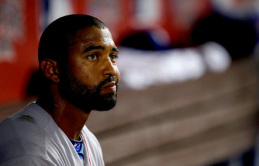 The Dodger fan base exploded with excitement this summer, as one might expect, when former all-stars such as Shane Victorino, Hanely Ramirez and Adrian Gonzalez were thrown into a lineup that already included Matt Kemp and Andre Ethier. People around the baseball world expected this offense to take off and propel the Dodgers to a division title in the NL West, despite absorbing over $260 million in the Red Sox mega-trade. However, the exact opposite became the reality. Since the trade (August 25), the Dodgers have gone 9-16 and were only two games back, while the Giants took off, culminating in winning another division title. This is just a simple case of guys underachieving, not performing, and not living up to expectations. Let’s start at the top, with Shane Victorino slotted into the leadoff spot in the LA lineup. The Dodgers were in desperate need of a leadoff guy, as Dee Gordon just simply wasn’t getting the job done despite his incredible speed. Victorino has posted just a .225/.298/.303 slash line, which is well below his career averages of .274/.340/.428. The former all-star center fielder also owns an OPS+ of just 67, very much below league average (100) and his career mark (101). He does have 13 steals in 44 Dodger games, but Don Mattingly has not been able to use those wheels as often as he would have liked. He also has a WAR of just 0.6 in his time with the Dodgers. Now onto the man who was " born" to hit at Fenway Park with his sweet left-handed stroke. However, his time in Boston was surprisingly cut about 6 years earlier than most expected. Gonzalez’s production has significantly declined, especially in Los Angeles. Normally a patient hitter who gets on base at a superb rate(.370 career OBP), Gonzalez has boasted just a .302 OBP in 116 plate appearances with the Dodgers to go along with a dreadful .245 batting average. Also, the pop in Adrian’s bat has seemingly disappeared. He has just 1 home run with the Dodgers, which ironically came in his very first at bat in blue. Yet, he has not left the yard in his last 115 plate appearances. Despite a small sample size, all the offensive numbers are down for Gonzalez. His slugging percentage sits at .368 (.505 career) and his OPS+ is 84 (136 career). Hanley Ramirez, another big acquisition by LA, has struggled mightily the past 3 seasons. He has shown decent production (10 HR 42 RBI in 54 games) in his time with LA. However, he is still not hitting for average and not getting on base enough. His slash line with the Dodgers (.257/.310/.458) is well below his career averages (.298/.371/.496). As mentioned, the power has been pretty good, however he is also striking out a lot more than he should, averaging 1 K per game (54). He also has only walked 15 times in 232 plate appearances. Collectively, these 3 players have produced much less than expected at the time of their arrivals. The other 2 full-time Dodger superstars mentioned (Matt Kemp and Andre Ethier) have also slumped for the entire month of September. Kemp, last year’s MVP runner-up to Ryan Braun, has battled continuous hamstring injuries all season long. In a season that started out with great promise (was hitting .417/.490/.893!! with 12 HR and 25 RBI in April alone) for Kemp is going to culminate with his worst month of the year. His performance this September has been downright awful (.186/.230/.300). Those numbers are not close to what Kemp is capable of and he has also hit just 2 home runs in 74 September plate appearances. August wasn’t much better in the power department for Kemp, hitting just 2 long balls in 110 plate appearances, with before coming prior to the acquisition of Gonzalez. Therefore, the 3-4 hitters in the Dodger lineup (Gonzalez and Kemp) have combined to hit 3 home runs since Gonzalez was added to the roster, and just 2 in the month of September. In addition, Andre Ethier has also been below average in September, posting just a .304 OBP (his worst of any month in 2012). In the end, this Dodger offense has sputtered when it was expected to turn into a juggernaut. This is a huge reason why the Dodgers completely fell out of the NL West race and sit 3.5 games behind the second wild card spot with 10 games to play. The pitching staff for LA has been pretty good. As a team staff they are third in the NL in ERA, second in Batting Average Against, and fifth in WHIP. Clayton Kershaw is still a dominant ace and Cy Young candidate to go along with a strong bullpen lead by the trio of Ronald Belisario, Kenley Jansen, and Brandon League. It is the Dodger offense to blame in the stretch run of 2012.
After another disappointing start that included the second shortest outing of his career, Roy "Doc" Halladay is experiencing his worst season since 2004. Halladay has 4.40 ERA (highest since 2000) and his numbers across the board have had serious decline. His K/9 is a pedestrian 7.43 (down from his 8.47 a year ago), his walks per nine are the highest since an injury shortened 2004 campaign), his left on base percentage is at a below average 69.2% rate (down from 78.1% last year and his 73.4% career average), and his ground ball percentage has also dwindled from his career average of 54.5% to 45%. In addition, hitters are hitting line drives (23.1% compared to 19.2% career average) and home runs (1.01 HR/9 compared to .75 HR/9 career rate) at a greater percentage off Doc than ever before. If those numbers are not shocking enough, how about that 51 starting pitchers have thrown more complete games this year than Halladay, the active leader in complete games. So what can be attributed to this statistical and performance slide? Well to start, Halladay went on the DL for the first time since 2009 with a strained latissimus dorsi. Even yesterday, after his seven run shellacking, Doc admitted he still is not 100% healthy. In addition, Halladay has seen a steady decline in his fastball, cutter velocity, and curveball velocity. As the case with a velocity decline, pitchers usually have less margin for error since hitters are able to adjust easier and punish mistakes. This is evidenced not only by his lackluster results but also a higher contact percentage rate against each of these pitches. However, pitchers with decreased velocity can sometimes face little performance tradeoff if their control is maintained or improved. Yet, as mentioned earlier, that is not the case as Halladay is walking more batters at a higher rate (5.3 BB%) since 2004. Of course this rate remains well above the league average of 8.5 BB%, but this still is not typical "Doc" and certainly has had some influence on his poor performance this season. So how much of this is attributable to injury, old-age, or bad luck. His BABIP of .299 this year is right at league average so bad luck on balls in play really is not a factor. However, his left on base percentage is well below his rate of the past couple of years (averaged a 78.58 LOB% from 2008-2011) and below league average (72%) so some bad luck may be the case here. However, most of the data does not point to regression to the mean which signifies that it is unlikely we will ever see Doc and his surgical precision again. Not to mean that he cannot remain a valuable middle of the rotation pitcher in the coming years (still has a very solid 3.67 FIP this season), but his times as a bona-fide ace are probably numbered. With only 1 guaranteed year remaining on his contract and a recent injury history, Halladay's 2013 campaign will be a pivotal stage in his career. At this point, Halladay is probably a borderline Hall of Fame candidate needing several more productive seasons to ensure Cooperstown immortality. In addition, despite an impeccable and storied resume, Halladay will face his hardest test in the coming off season, when he will be doubted for the first time since his first career revival in 2000 with then minor league pitching coach Mel Queen. Unfortunately, Queen has since passed and Halladay is much different from the immature 23 year old kid that completely changed the path of his baseball future under Queen's tutelage. This time, Doc will be the one under the knife. 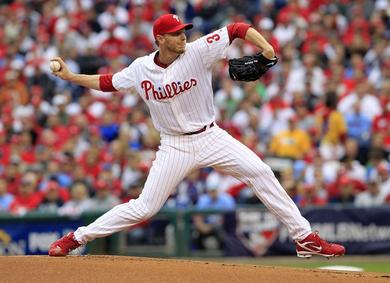 Roy "Doc" Halladay is amid a mid-career crisis.
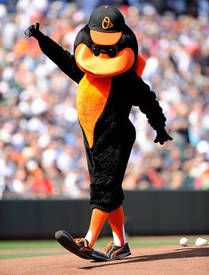 All the hops and “chops,” if you will, seem to have been going the Baltimore Orioles way all season long in 2012. As the summer came, the question around baseball seemed to be, when will the Orioles fade away? Now, in late September, with Buck Showalter’s squad right in the thick of a pennant race, the question seems to have shifted to, how have they been able to get it done? They sit just one game behind the Yankees and currently lead the wild card standings. The Orioles lack a superstar player, maybe with the one exception being Adam Jones (.288/.338/.502 31HR 79 RBI). Other than the former Mariner, the O’s do not have a player batting over .261. They have had to mix and match all year long, especially when trying to discover a productive leadoff hitter. Right as Nick Markakis looked to be the guy for the job, he went down with a season-ending injury. Before Markakis, the leadoff spot was a huge disappointment. In mid-July, the Orioles leadoff hitters collectively had an on-base percentage (OBP) of .264 (Chavez, Andino, Roberts, Avery, Reimold, Flaherty all being used in this capacity). That is an ugly stat for any spot in the batting order, let alone leadoff. Finally, as Markakis settled into the role (.363 OBP at time of injury), he went down with a gruesome hand injury. However, like their rival in the pinstripes, the Orioles have gotten great power production from guys all over the place. They currently are third in the American League in home runs as a team with 192. Meanwhile, unlike the Bronx Bombers, the Orioles lack a legitimate ace in their rotation. They have had 12 different pitchers start a game in 2012. Other than Wei-Yin Chen (30 starts), nobody has started more than 20 games. Also other than Chen, nobody has tossed more than 128 innings. Of all 12 pitchers to make a start this year, 5 have compiled an ERA over 5. With all the innings and games thrown by Chen, he has been very average this season (3.98 ERA, 105 ERA+). Jason Hammel, Miguel Gonzalez, and Chris Tillman have all enjoyed some success (3.43 ERA 122 ERA+, 3.52 ERA 119 ERA+, 3.22 ERA 130 ERA+, respectively). Of course, the problem here is injuries and not enough innings, which has led to bad outings from other guys. This Oriole team is also 12th in the American League in defense, committing 99 errors. The O’s are in the middle or bottom or the pack in a lot of important pitching and offensive stats. They are 8th in ERA and Batting Average Against as a staff. They are 11th in OBP, 6th in AVG, and 7th in runs scored. With these numbers, how can they possibly be keeping pace with a team like the New York Yankees? There are a few possible answers to this puzzling question. The most underrated part of a 25-man roster, the bullpen, for this team has been lights-out all season. Of relievers with more than 36 innings pitched, only one guy (Kevin Gregg) owns an ERA of over 3. These guys include Jim Johnson (2.69), Luis Ayala (2.69), Darren O’Day (2.37), Pedro Strop (2.26), Troy Patton (2.58), and Matt Lindstrom (2.72). With the mighty struggles of the starters at times, and the fact the only 1 starter has thrown a complete game this season, the bullpen has been nothing short of excellent. Looking back, playoff teams and World Series winners always seem to have a strong bullpen (i.e. 2011 St. Louis Cardinals, 2009 New York Yankees). And as if it could not be any better, they just called up the best pitching prospect in baseball equipped with this insane pitch (45 second mark). Another startling stat is the Orioles record in one-run games and extra-inning games. These stats could be lucky or just coincidental, but I like to call them clutch. They are 27-8 in one-run games and 16-2 in extra innings. Dan Duquette and Buck Showalter have done a magnificent job with this team in 2012. Duquette has taken some chances and been very aggressive in making low-risk moves throughout the season. He has picked up guys like Nate McClouth, Lew Ford, Joe Saunders, Randy Wolf, etc. These guys are not big names, and some may have even been completely forgotten about by the baseball world (looking at you Lew Ford), but they have made contributions to help the team win. One last interesting stat belongs to Taylor Teagarden. In just 50 at bats he has 7 hits, good for a .140 batting average. Nothing special right? Of the 7 hits, he has 3 doubles, 2 home runs and 8 runs batted in. That’s the kind of season it has been for this club. A season filled with clutch performances and excitement. Look for the Baltimore Orioles to " Buckle Up" this October and make some noise for the first time since 1997.
|









 RSS Feed
RSS Feed